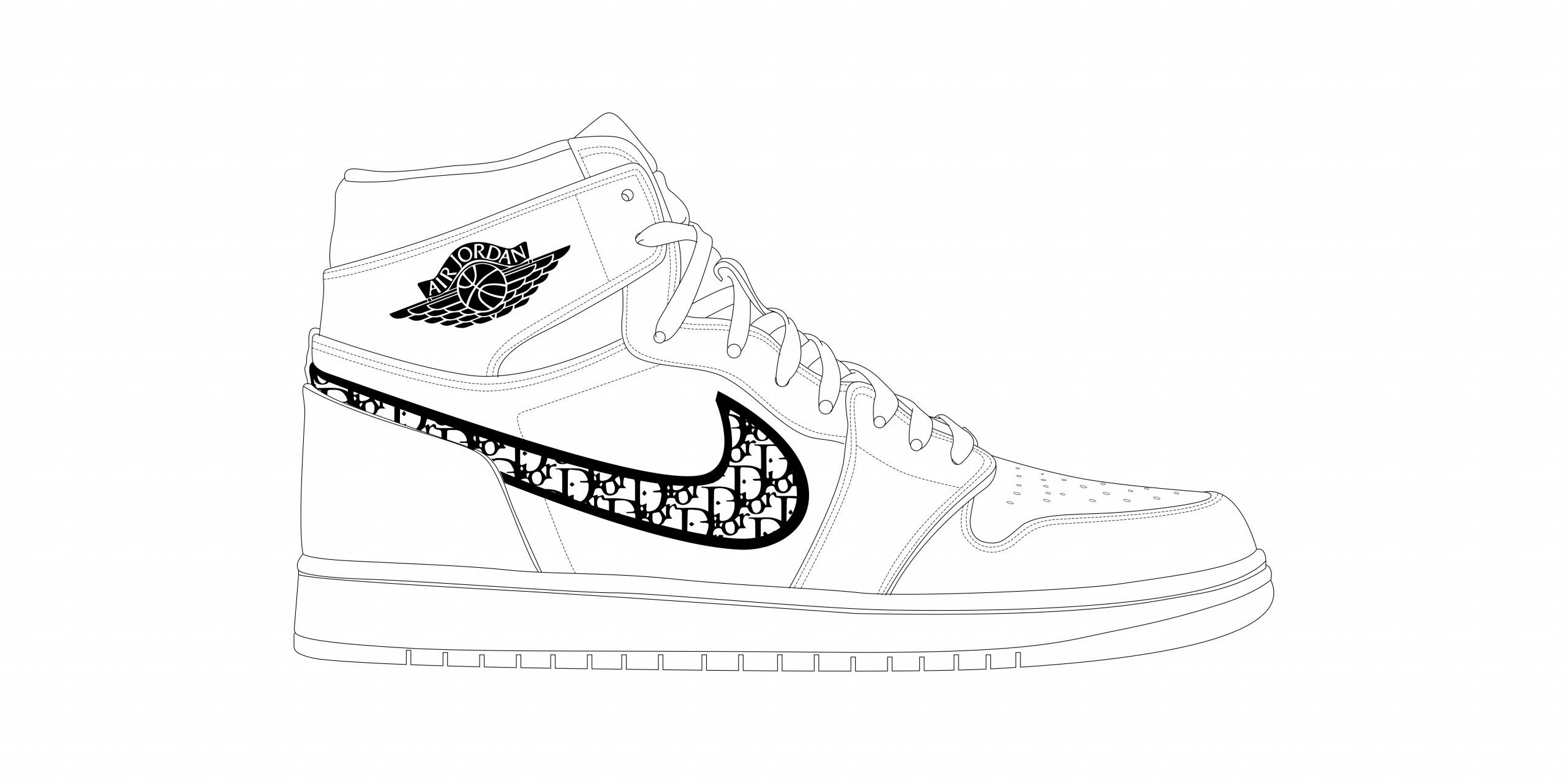Modern Collectibles is analyzing the Dior Air Jordan 1 in partnership with Sotheby's. Visit Sotheby's to purchase a pair of the Dior Jordans.
When Michael Jordan was drafted third overall by the Chicago Bulls in the 1984 NBA Draft, basketball shoes were miles away from the technical marvels they are today. The market was dominated by simple leather, nylon and rubber silhouettes like the Converse Fastbreak and the adidas Forum. Nike had a plan to change that, and Jordan was at the center of that strategy.
After his junior year at the University of North Carolina where he’d been named a consensus All-American and national player of the year, Jordan was a rising star. Nike — which he’d signed with even though he desperately wanted to be an adidas athlete — aimed to make him the face of his own line, launching with a shoe created by veteran designer Peter Moore.
On the other side of the world, Dior was a 40-year-old French fashion house known for its elegant couture that had just come under the wing of Bernard Arnault; the businessman shelled out $80 million to purchase Dior’s ailing parent company Boussac with a moonshot goal of creating a fashion conglomerate the likes of which the world had never seen.
Both parties were grand in their ambitions, but totally unrelated in their practices. So how and why, 36 years later, did Dior set its sights on the Jordan Brand to create the Dior x Air Jordan 1 “Air Dior,” a show-stopping blend of sport and high fashion that was one of the most viral sneaker moments ever? Here’s the timeline, and visit Sotheby's to purchase this limited release.
1985
#
Air Jordan 1 Released#
Michael Jordan wasn’t too warm on signing with Nike initially. He played in Converse during his time at the University of North Carolina and wanted to sign with adidas as he headed into the pros. Even Nike’s pitch to build an entire brand around him left him largely unswayed for one simple reason: he didn’t like the shoes they showed him. However, with the assistance of Peter Moore — Nike’s first-ever creative director who was also responsible for the Dunk — and a reworked silhouette with a thinner midsole, the Swoosh was eventually able to win Jordan over.
The Air Jordan 1 was put into production but wouldn’t launch until the tail end of Jordan’s rookie year in 1985, so he took to the court in the Nike Air Ship, a basketball shoe from 1984 with several similar design elements. It didn’t take long for the red and black Air Ships Jordan was wearing to run afoul of the NBA’s uniform requirements. The NBA sent Nike a vaguely-worded letter in February 1985 to inform them that Jordan’s on-court footwear wasn’t in-line with their standards, stating that “rules and procedures … prohibited the wearing of certain red and black basketball shoes by Chicago Bulls player Michael Jordan on or around October 18, 1984.”
This ambiguity allowed the marketing masterminds at Nike to quickly create their own narrative around the “banned” shoes. Since the Air Ship was similar in shape and shade to the Air Jordan 1, Nike was able to infer that the Air Jordan 1’s black and red “Bred” colorway, which Jordan never actually wore during an NBA game, was in fact “banned” by the league, a false narrative cleverly furthered by a commercial that placed black bars over the shoes on Jordan’s feet and quipped, “Fortunately, the NBA can’t stop you from wearing them. Air Jordans from Nike.” All that mattered here was that the public thought the Air Jordan 1 was banned, firmly established as a luxurious-yet-rebellious option.
Surprisingly, the Air Jordan 1 also found favor among skateboarders. Renowned for its supportive high-cut upper and durable build, the shoe even made an appearance in the Bones Brigade’s seminal 1987 skate film The Search for Animal Chin.
1988
#
Spike Lee Stars In His First Air Jordan Commercial#
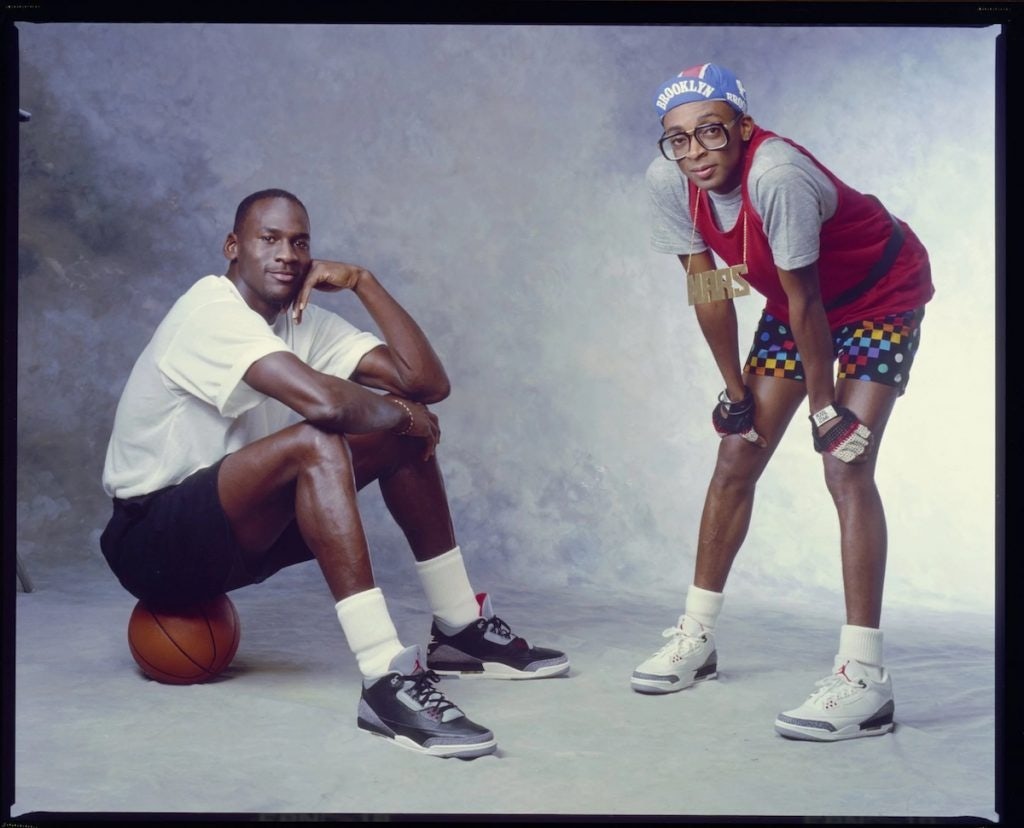
By 1988, Jordan Brand was ramping up: the Air Jordan 3 had arrived. With its Tinker Hatfield-designed ⅝ cut and brand-new elephant print embellishment, there was nothing like it in the world of basketball footwear. The marketing was just as impactful as the shoe itself — Jim Riswold and Bill Davenport of powerful advertising firm Weiden + Kennedy saw a trailer for Spike Lee’s debut film She’s Gotta Have It with the fast-talking Mars Blackmon (played by Lee himself), and immediately pegged Blackmon as a perfectly spastic comedic foil to the smooth and serious Jordan.
Though Lee thought Riswold and Davenport were playing a joke on him when they first contacted him, he quickly signed on for a now-classic Air Jordan 3 spot and would return as Blackmon in later ads. Looney Tunes characters like Bugs Bunny and Marvin the Martian followed by hawking Jordans in the ’90s. These ads served a dual purpose: they humanized Jordan, who in the early part of his career was known as little more than a ruthless competitor, but more crucially, they built a cult of personality around his footwear.
1990
#
Your Sneakers Or Your Life#
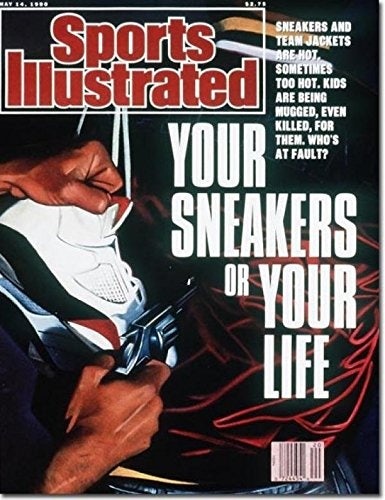
With Jordan Brand’s sneakers increasingly used for off-court wear, they became a status symbol that some would give up their life for. The May 14, 1990 issue of Sports Illustrated addressed this issue with a chilling cover story entitled “Your Sneakers Or Your Life,” which spotlighted a myriad of cases in which teenagers were murdered for their Air Jordans and Starter jackets.
The article addressed the dark side of Air Jordans’ esteemed status in stark terms: “Something is very wrong with a society … in which pieces of rubber and plastic held together by shoelaces are sometimes worth more than a human life.” Michael Jordan could not ignore the perverse power his shoes had taken on, as he stated in the article: “I thought people would try to emulate the good things I do, they’d try to achieve, to be better … I never thought because of my endorsement of a shoe, or any product, that people would harm each other.”
1996
#
Jordan Brand Becomes Its Own Entity#
Up until 1996, Jordan Brand was simply a successful Nike line. Though Air Jordans had their own Jumpman logo, each pair was clearly sold as a Nike product, not a Jordan product. That changed when the Air Jordan 12 became the first sneaker to be packaged in its own distinct Jordan Brand box.
Jordan Brand was — and remains — still under the Nike umbrella, but never before had so much autonomy been granted to a single athlete’s products, a treatment not afforded to the Swoosh’s other stars of the ’90s like Bo Jackson, Andre Agassi and Ken Griffey Jr. Even with Michael Jordan’s penultimate retirement on the horizon, Air Jordans had superseded basketball to become fashion statements all their own.
2001
#
Air Jordan 1 “Japan Addition” Pack Released#
Since its 1985 debut, the Air Jordan 1 had only returned to market once. In 1995, Nike brought it back in the original “Chicago” and “Bred” colorways with a retail price of $80 — but the idea of “retro” sneakers hadn’t quite caught on in the mainstream yet. Average consumers were looking for new shoes with modern technology, so the Air Jordan 1’s first retro wound up on sales racks for as low as $9.99. Although this was great news for bargain-conscious skateboarders, it wasn’t the triumphant return to market that Jordan Brand was hoping for, and the Air Jordan 1 was shelved until 2001.
Around the turn of the century, Nike launched a special CO.JP line whose offerings were exclusive to select Japanese retail partners like atmos and mita sneakers. “CO.JP is the architect [of modern-day sneaker culture],” Jeff Staple told HYPEBEAST in 2020. “If it wasn’t for CO.JP, you wouldn’t have Tier Zero [Nike] releases, you wouldn’t have Nike SNKRS.” CO.JP was all about providing products to an extremely discerning customer with a wealth of brand knowledge – the perfect avenue to reintroduce the Air Jordan 1.
In 2001, Nike revived the Air Jordan 1 as a CO.JP release. It was distinct from the unsuccessful 1995 retro for more than just the Japan-only distribution, as it marked the first time the Air Jordan 1 had been produced in new colorways. “Midnight Navy,” “Black” and “Navy/Metallic Silver/White” were all made in individually-numbered runs of 3,000 pairs, while the “Tokyo,” a metallic silver style was produced in a run of 2,001 numbered pairs, and even came packaged in a silver briefcase. Apart from being the Air Jordan 1’s first new styles since 1985, the four-pack of CO.JP releases marked the first time Nike held the model aloft as a beacon of sport luxury.
2008
#
The First Air Jordan 1 Collaboration#
Collaborative sneakers drop on a weekly basis in 2022, but back in 2008, each collaboration was a major event in and of itself. Jordan Brand entered the collaborative sphere in 2005 with an UNDEFEATED x Air Jordan 4 that was limited to only 72 pairs and now resells for five-figure sums, plus a friends-and-family Eminem x Air Jordan 4 that was produced in a run of 50. They then took three years off from the collaborative sphere before returning in 2008 with a Levi’s x Air Jordan 1.
Levi’s, an iconic American denim brand, knighted the Air Jordan 1 as a classic piece of Americana in its own right. Dubbed the “23/501” (a pairing of Michael Jordan’s jersey number with the model number of Levi’s classic shrink-to-fit straight leg jeans), the Levi’s x Air Jordan 1 utilized premium denim panels embellished with classic elephant print, and also featured rivet-inspired gold hardware. The shoes were accompanied by a limited-edition pair of jeans and a T-shirt, spotlighting them as a crowning piece of a street style uniform. “The great design paired with the cultural significance of Michael Jordan just makes the Air Jordan 1 such a huge, landmark sneaker for collaborations,” says Zack Schlemmer, content manager at Stadium Goods.
2015
#
Jordan Brand Launches “Retro Remaster” Initiative#
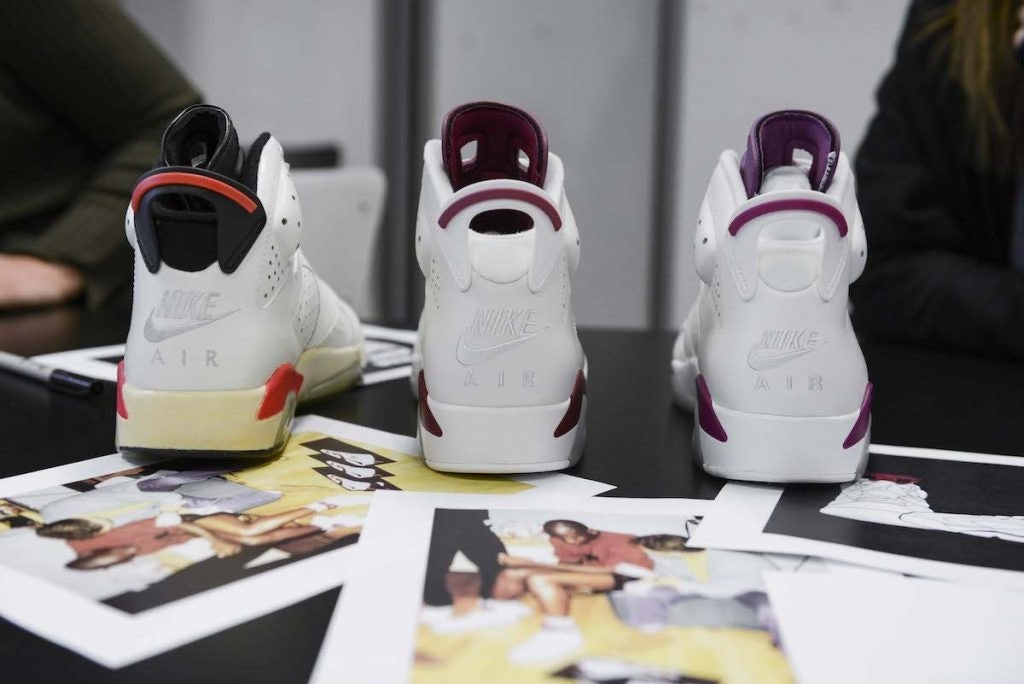
Collabs aside, Jordan Brand was not known for impeccable quality control or elevated materials in the first decade of the new millennium. Air Jordans were supposed to be a premium product, but the materials were simply not up to par: paint chipped and cracked on midsoles, cheap leather would tear, thin suede toeboxes folded like paper and many retro releases were not true to their original products in shape and style.
To solve this problem and address the growing cacophony of complaints from consumers, Jordan Brand brought its “Retro Remaster” initiative to market in the spring of 2015, kicking off with the fragment design x Air Jordan 1 designed by the legendary Hiroshi Fujiwara. Using true-to-the-original details, elevated materials and a production process that claimed 100 pairs of hands touched every sneaker to ensure its perfection, the “Retro Remaster” aimed to elevate Air Jordans to a premium lifestyle product.
“The brand is 30 years old, so carrying the torch in creating the next future classics was really important,” says Nike product line manager Jeff Atenza. “How we go about doing this is just ensuring MJ’s legacy stays alive.” With this enhanced focus on luxury came an enhanced price as well, with Air Jordans rising to as much as $220 a pop.
2016
#
Kim Jones Collaborates with Nike For the First Time#
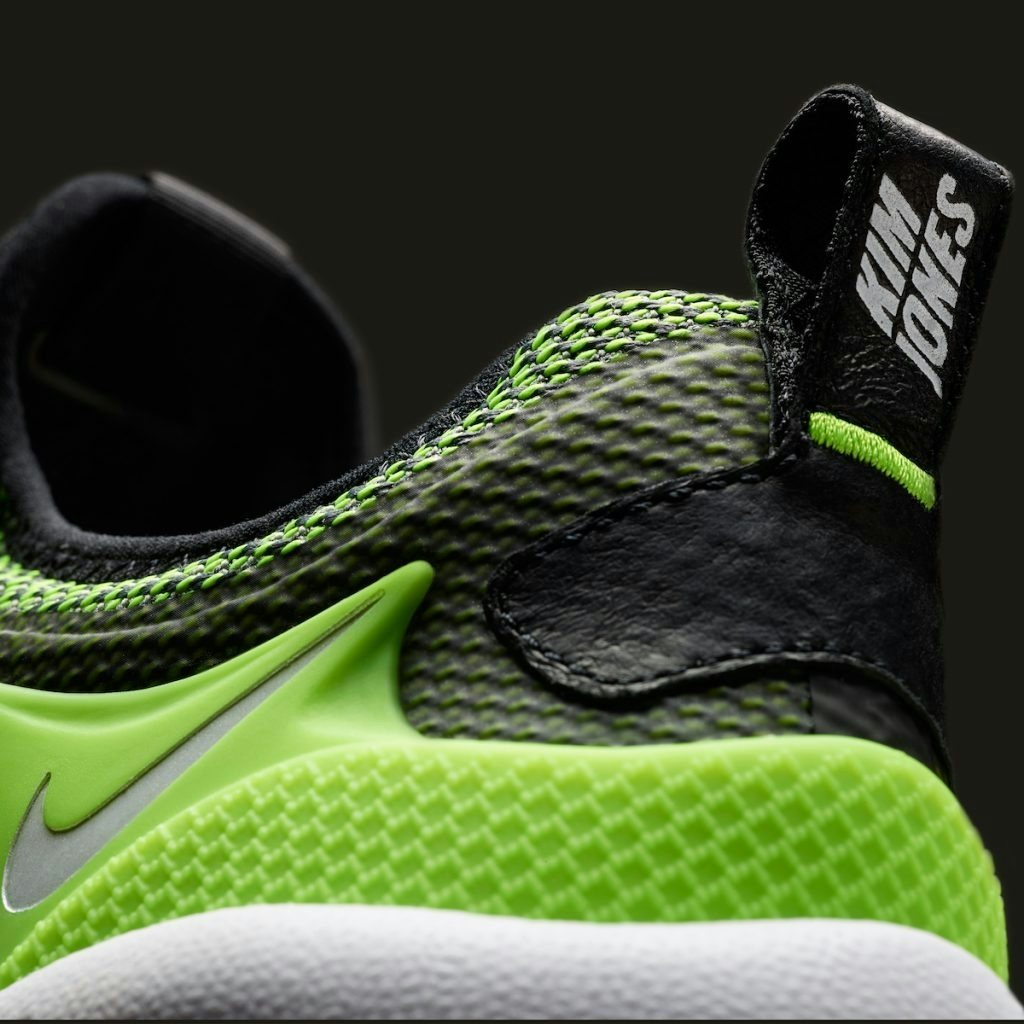
Steeped in the traditions of British sportswear and possessing a world-class knack for tailoring, English designer Kim Jones was no stranger to footwear collaboration — he’d worked on sneakers with Umbro as far back as 2004 — but 2016 saw him team up with NikeLab for his first co-created Nike effort. Jones brought his eye for sportswear and fine details to the Air Zoom LWP, a modernized take on 1995’s Air Scream LWP that he said was about “taking the DNA of Nike stuff and mixing it together.”
Jones’ inaugural Nike silhouette was more of a cult classic than a mainstream smash, but it foreshadowed his many collabs to come. In an interview with Nike News, Jones even mentioned he’d like to “do that mix-and-match, cut-and-paste to get something new,” on future collabs – exactly what he’d do on the “Air Dior” a mere four years later.
2017-Present
#
Collaborative Bonanza#
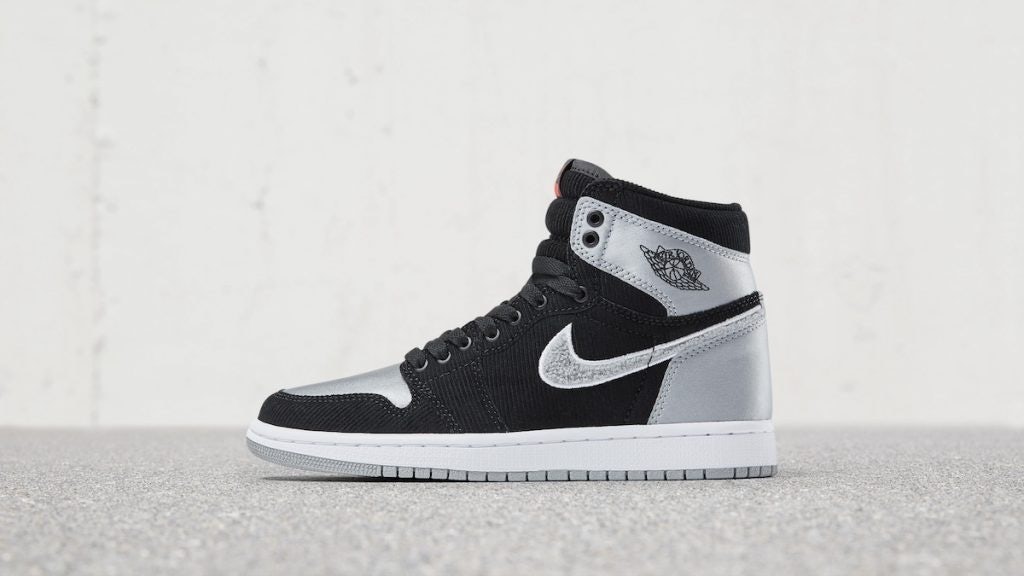
Nearly a decade after the first Air Jordan 1 collaboration was released in 2008, the sneaker industry had fully woken up to the audience collaboration could attract and the prestige it could bring both parties involved. The Air Jordan 1 was at the center of Jordan Brand’s collaborative push from 2017 to 2019, as it was remixed by the likes of Aleali May, SoleFly and Union, but nothing topped Virgil Abloh’s Off-White x Air Jordan 1 from his “The Ten” collection.
Abloh, an Illinois native who grew up idolizing Michael Jordan, remixed the Air Jordan 1 as part of his “Revealing” offerings by deconstructing it to its core elements, showing how, even after three decades on the market, its design stood the test of time. The Air Jordan 1 was the most recognizable Jordan — and quite possibly the most recognizable sneaker — in the world, due in no small part to this collaborative effort.
A byproduct of all these collaborations was a swath of desirable in-line releases and increased attention on takedown Air Jordan 1 models that had often been met with scorn in years past. In the months after the Off-White x Air Jordan 1 was released, Air Jordan 1 resell prices skyrocketed. Under-the-radar colorways that could be had at Nike outlets for $50-$100 were suddenly going for upwards of $500, and the demand for Air Jordan 1s became so acute that even the Air Jordan 1 Mid — a chopped-down style that was, until that point, largely the provenance of big-box mall retailers — began selling out and commanding handsome aftermarket sums. “Everyone wants to wear the Air Jordan 1,” notes Schlemmer. “It’s loved by people from all walks of life, from skateboarders to runway models.”
2018
#
Kim Jones Joins Dior#
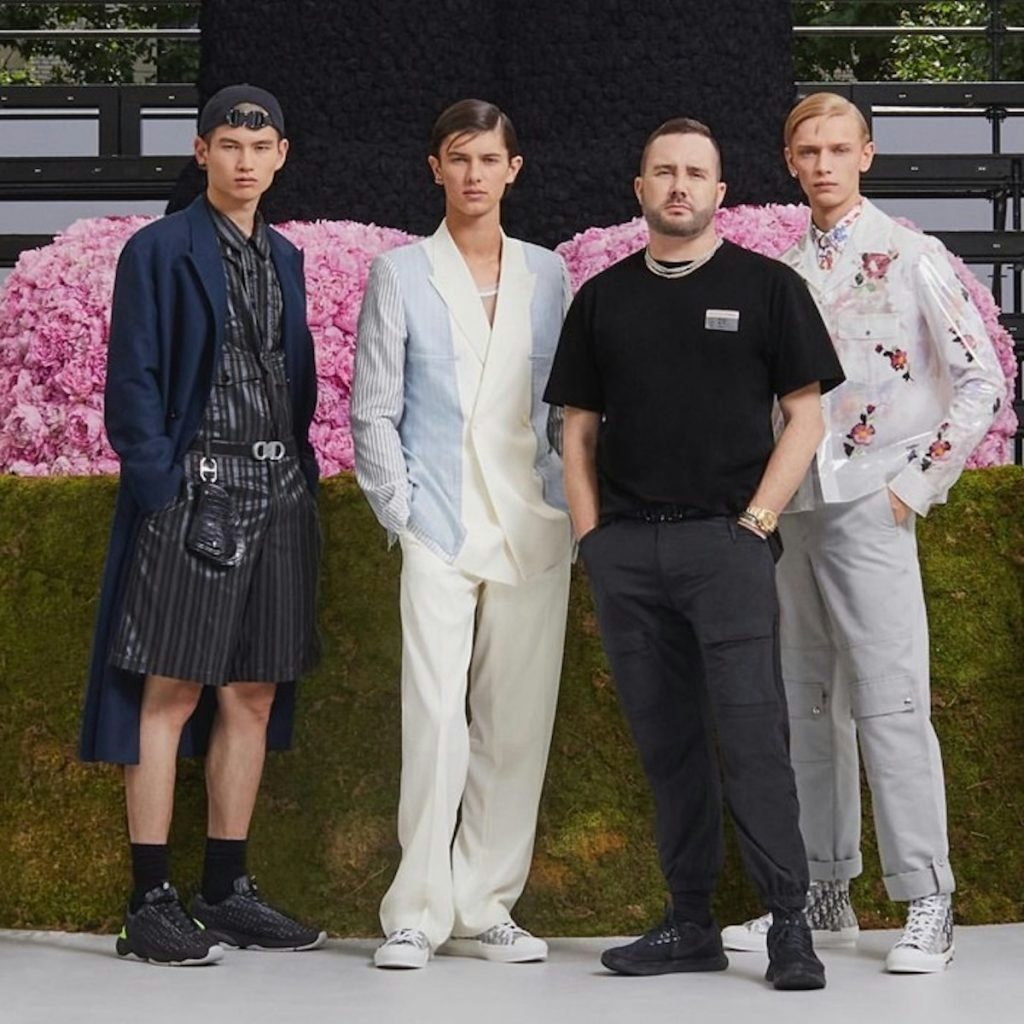
Running parallel to the Air Jordan 1’s surge of popularity in 2017-2018, Kim Jones left his post at Louis Vuitton, where he’d kicked down the wall between the streets and the runways by collaborating with fragment design, Supreme and others, to take the top menswear job at Dior.
The news was met with curiosity and anticipation. How would Jones bring his knowledge of British sportswear to a new house? Who would he collaborate with? Jones dove right into the waters of street culture by working with entities like graffiti writer-turned commercial artist KAWS and Daniel Arsham, bringing a new youthful energy to Dior and setting the scene for the arrival of the Dior x Air Jordan 1.
2019
#
Dior x Air Jordan 1 Revealed#
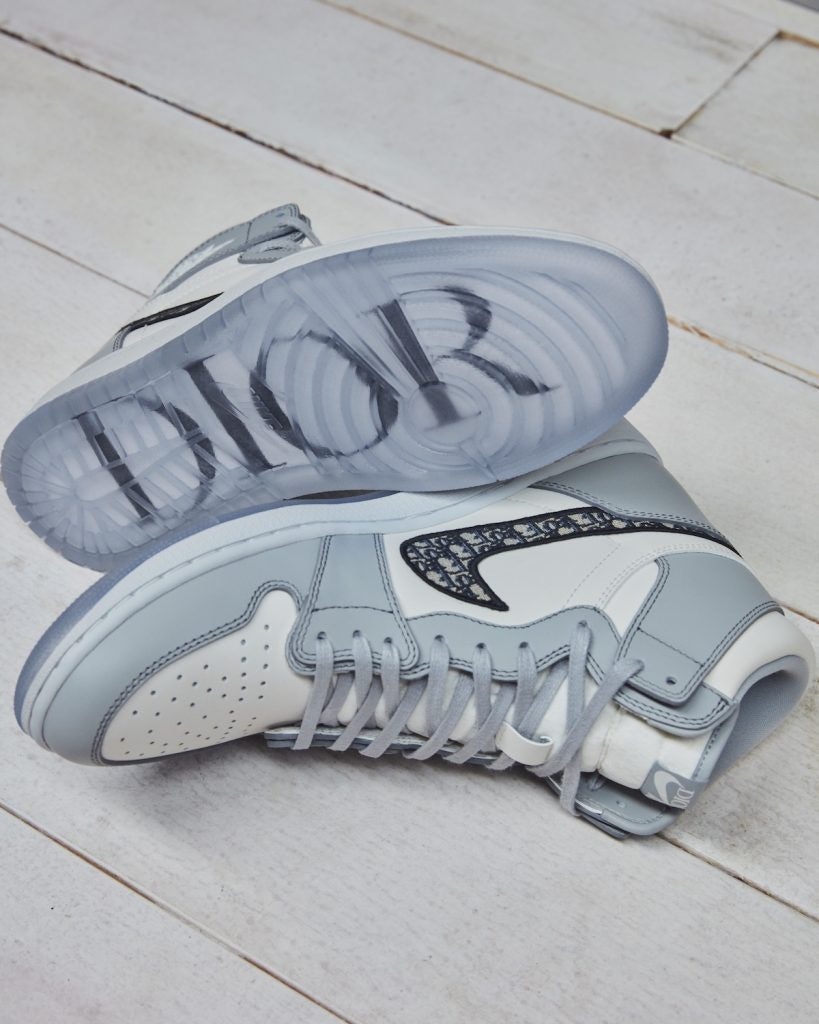
In the fall of 2019, rumblings of a Dior x Air Jordan 1 collab for 2020 started to surface. Nobody knew exactly what it would look like or what it would be inspired by, with sneaker media outlets guesstimating everything from a Dior B23-inspired design to a repeating logo print. The only piece of early information that proved correct was the shoe’s price — $2,000 USD, a staggering amount that was roughly equivalent to the price of a dozen pairs of regular Air Jordan 1s.
When the shoe first saw the light of day on December 9, 2019, at Dior’s Pre-Fall 2020 menswear show in Miami, it quickly went viral. Crafted of fine calf leather, sporting Dior’s jacquard oblique print on its Swoosh, making use of a signature Dior Grey and white palette and accompanied by a ready-to-wear collection with Air Dior branding, the Dior x Air Jordan 1 grabbed the eyes of the high fashion establishment and the sneaker world, even overshadowing Dior’s concurrently debuted collaboration with Stüssy founder Shawn Stussy.
Jones was succinct in his assessment of the shoe, stating “It’s been upscaled” in a comment to Vogue after the show. Jordan Brand VP of design Martin Lotti also spoke on the collaboration, saying “Our partnership with Maison Dior will offer a new look into the style of basketball and blend high-end streetwear with luxury fashion. We will pay homage to both brands’ rich iconography and draw inspiration from our heritage.”
Dior was not forthcoming with release information, letting the hype around the collab build even higher by simply stating that it would be released in Dior boutiques April 2020 (a date that wound up being pushed back due to COVID-19), revealing its low-top counterpart in January 2020 and announcing that it would be limited to 8,500 pairs in March 2020.
2020
#
‘The Last Dance’ Spotlights the Air Jordan 1 ‘Chicago’ ahead of the Dior x Air Jordan 1 Release#
While Dior was building anticipation for the Air Dior release, the Air Jordan 1 was getting an equally important — if vastly different — boost in its profile from ESPN and Netflix’s The Last Dance, a 10-episode docu-series that began in April 2020 and provided a behind-the-scenes look at Michael Jordan’s quest for a sixth and final NBA Championship with the 1997-98 Chicago Bulls. Much of the world was stuck at home due to lockdowns necessitated by the onset of the COVID-19 pandemic, drawing even more attention to the series, and one of its most notable moments was close-up footage of Jordan playing his final game at Madison Square Garden in a 13-year-old original pair of the Air Jordan 1 “Chicago.”
The “Chicago” had long been one of the most popular Air Jordan 1 colorways, releasing in 2013 and 2016, but with the red-hot commodity market growing rapidly in the pandemic’s early days, it was soon selling for over $2,000. The market for original, game-worn pairs had heated up to supernova temperatures as well — in May 2020, a pair worn by Michael Jordan himself sold at auction for $560,000 USD.
After months of anticipation and postponements, the Dior x Air Jordan 1 finally touched down in June 2020, two months after it was originally slated to release. Made available to the public through a special microsite that let would-be buyers select low or high-top options and the Dior store they’d like to pick their pair up at in early July, the site received over five million hits — or 625 times as many people as the 8,500 total pairs that were available. In London, where an in-store release was hosted at luxury department store Selfridges, a line of hundreds was already queued at 4 a.m. the morning of the release. Five thousand pairs were reserved for Dior’s top clients.
Leading end-of-year “best of” lists across the world of sneaker media and selling for anywhere from $7,000 to $13,000 on aftermarket sites like StockX, it was an unabashed success, and the biggest Air Jordan 1 release ever, cementing the Air Jordan 1’s status as a luxury item. “People appreciate good design whatever it is,” Jones told Vogue. “But nowadays, they can do a lot of research. The Air Jordan [1] in particular, has a huge amount of work behind it to merit its worth.” The Air Jordan 1 has grown in profile so greatly over the last four decades that it’s almost wholly removed from Michael Jordan himself, and doesn’t even need time to increase in value anymore — its value is apparent right off the bat, making it the perfect collaborative canvas for Dior to make its mark on the sneaker world.
